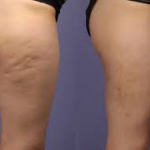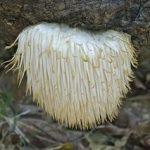How to Properly Mop Floors
The ‘Wet-and-Dry’ Floor Cleaning Method
When using a mop and bucket, the ‘Wet-and-Dry’ method is a very simple yet incredibly effective step in picking up extra dirt off the surface during floor cleaning, and leaving the floor streak-free and shiny.
Before washing or mopping the floor, always begin by thoroughly sweeping or vacuuming the floor to remove all loose debris.
Mix the right cleaner solution, in the right about, into a bucket of hot water: As stated on BobVilla.com, “it’s a common misconception that more soap equals cleaner floors. In reality, using too many suds leaves behind a sticky residue—and that sticky residue can trap more grime. Whether you opt for a homemade or commercial cleaner, choose the one that’s best for your floor type, and use it sparingly when mixing it into a bucket of water.
Hardwood: Check if your floors are finished with polyurethane or wax. If your floors are sealed with polyurethane, use a mild or pH-neutral soap with water. Avoid cleaning products (natural or commercial) with acidic additives (ex. Vinegar or citris), which can damage wood over time. If your floors are waxed, use a damp (almost dry) mop once a week at most—even a small amount of water may cause warping.
• Laminate: As is the case with hardwoods, less is more when it comes to water; you want to keep it from seeping underneath the laminate planks. Try damp mopping and spot cleaning, but never use a commercial floor cleaner with polish.
• Vinyl: One of the best cleansers for this floor surface is a solution of apple cider vinegar and water. Due to its acidity, vinegar helps remove dirt without leaving behind a buildup, and it disinfects at the same time.
• Linoleum: Not as resilient as vinyl, this floor surface requires a milder cleaner. Mix a few drops of dish soap with hot water in a spray bottle, and then spritz the surface section by section. Finish up by going over the floor with clean water from a dampened mop.
• Stone tile: Mop with a pH-neutral, non-chelating cleaner that won’t react with the minerals in the stone. Skip bleach, ammonia, and vinegar, as even small amounts could damage the seal on stone tile floors.
• Ceramic tile: White vinegar and water create an effective, odor-eliminating, nontoxic cleanser for this floor surface—great for households with pets and children.
Mopping
You want the mop damp, not wet. In some cases, as with hardwood floors, laminates, and linoleum, the mop needs to be wrung out numerous times until it’s almost dry.
Two Buckets Are Better Than One
For optimal hygeine use two buckets – one for rinsing and one for the cleaner. By dipping the dirty mop into a separate rinse bucket, you can wring out the water without contaminating the detergent bucket with whatever debris was picked up. When the water in either bucket gets too dirty, replace it, but don’t just dump the old batch down your kitchen sink. Mop water is full of germs and dirt, so dispose of it down the toilet—not in the kitchen sink where you’ll your vegetables and your dishes during tonight’s meal prep.
The Washing Techinique
Start by washing the floor with a rag mop until you’re satisfied you can’t clean any more dirt off. A rag mop is still the best option for floor cleaning, despite all the fancy new types of mops, and regardless of the type of floor you have (tile, vinyl, laminate, hardwood). Many professional cleaners say that Swiffer mops are not recommended for wood floors because they can scratch.
Be sure to change the water frequently when mopping otherwise you are simply putting dirt and bacteria back onto the floor by mopping your floors with dirty water.
Wipe in the Right Direction
As you would if you were painting a floor, begin mopping in one corner of the room and work your way back toward an exit to avoid stepping in the area you just cleaned. Just as important, pay attention to the pattern in which you push your mop, For hardwood floors, swipe in the direction of the wood grain; for floors with a more textured surface, wipe in small figure eights. If you come across some stubborn spots that just won’t get clean, go back over them with some cleaner and a cloth after you’ve completed a full pass on the floor.
Its recommended to work only 4′ by 4′ sections of floor at a time (wash and dry before moving on to the next section).
Then the floors should always be dried. This will pick up additional dirt that was left behind by the mop. You will be amazed at how much dirt you can still pick up during this simple step. If you dont dry the floor with the ‘Wet-and-Dry’ method, this dirt will be left behind and build up over time, lowering the performance of floor seal or polish.
Drying the floors will also prevent the growth of bacteria which can occur when water is left to sit on the floor. If you have hardwood or laminate floors, drying the floors will also prevent water or moisture from seeping between the planks, which can lead to floor damage as well as mold or mildew.
One option is to hand dry the floors by getting on your hands and knees with a clean dry towel.
The other option for drying floors is to go over the damp area with a CLEAN, DRY mop.
You can use a microfiber pocket mop to dry the floors, or you can use a clean, dry rag mop. Another option is to wrap a towel around the rag mop, and secure the towel into place with rubber bands at the base of the handle. After the towel has been used you can toss it in the laundry so that you are always using a clean mop/ towel for drying.
Air It Out
To ensure a bacteria-free mop the next time you clean, soak your mop head after using in a mixture of bleach and water to disinfect it. Wait 10 minutes, then rinse and wring out the excess water.Squeeze out every last drop of moisture.
Never leave your mop sitting in the bucket to dry, or you’ll risk the formation of bacteria and mold in the leftover moisture.
Three Important Things to Remember:
1 – Change the water frequently.
2 – Clean approx 10 m2, then ‘dry up’.
3 – Change mops when they get dirty.
More about Mopping
 If you have hardwood floors, I recommend you use Murphy’s Oil Soap. (And yet, another owner of a professional cleaning company says dont use Murphys Oil as it will ruin wood floors. Similar to Martha Stewart in 2010 saying to clean hardwood floors with ployurethene coating with vinegar and water, then in 2015 saying never use vinenegar and water on polyuretnane coated hardwordd floors…. Err on the side of caution, I suggest).
If you have hardwood floors, I recommend you use Murphy’s Oil Soap. (And yet, another owner of a professional cleaning company says dont use Murphys Oil as it will ruin wood floors. Similar to Martha Stewart in 2010 saying to clean hardwood floors with ployurethene coating with vinegar and water, then in 2015 saying never use vinenegar and water on polyuretnane coated hardwordd floors…. Err on the side of caution, I suggest).
There are some other hardwood floor products on the market designed for hardwood, and one that comes to mind: Pledge Hardwood Floor Cleaner.
Once again, if you find that you might have a build up of product on your floors then use vinegar and water a couple of times and that should bring back your shine.
We also use two types of mops, both of which are made by Vileda. The first mop is a rag style head, in which the actual mop head is made up of blue and white strips of cloth, and we use this on baseboards and all tile floors. We typically use Murphy’s Oil Soap and you don’t need very much product. The second mop, is a flat micro fiber, which is what we use on hardwood floors.
Baseboards
Always do the baseboards first, (with the rag mop) and make sure that the mop is wet enough (but not soaking) to actually clean the baseboards. Do the entire house at once. It won’t matter how clean your house is at the end of the day, if your baseboards are still dirty, then your house will look dirty.
Tile Floors
Use the same mop to wash all of your tile floors. You can do these all at once, or if you prefer you can do a floor at a time.
Whether it’s tile or hardwood, be sure to mop around table and chair legs, and under furniture.
Hardwood Floors
When mopping hardwood floors, use about a cap full of Murphy’s Oil Soap in about 6 liters of warm to hot water. You must get the mop head wet and ring it out by hand, again you want it wet but not soaking wet.
General Moping Tips
Mop your way out of a room, and it helps to keep the mop head going in the same direction of the grain of the hardwood floor – this reduces the chance of streaks forming.
When it’s all dry, put back your mats, chairs, and anything else you picked up off the floor.
Remove the mop heads and place in the washing machine.







Leave a Reply